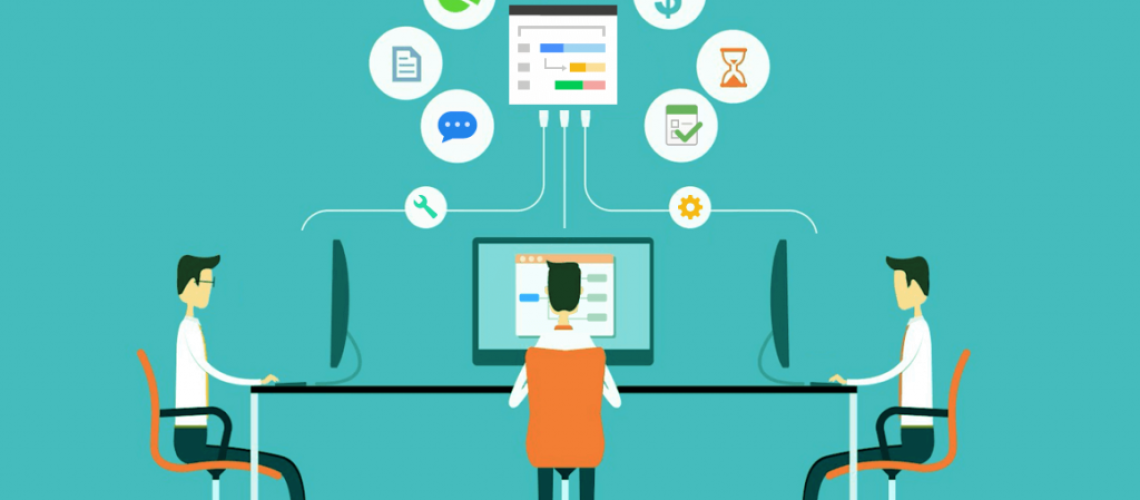In recent years, we have seen rapid development in artificial intelligence (AI), which has altered our interaction with technology. A major breakthrough is the rise of generative AI agents that are transforming industries, increasing creative processes and redefining collaboration between humans and machines. These agents function not only as tools but also partners, helping us to accomplish more than what was previously possible.
Generative AI tools are quickly demonstrating their ability to transform industries and alter the possibilities of what technology can accomplish. These advanced systems, able to produce text, images, code, and even music, have transitioned from the realm of science fiction—they exist now, and they are transforming the landscape.
As generative AI agents continue to evolve, their ability to understand and adapt to human needs will only deepen, paving the way for a future where technology feels less like a tool and more like an extension of ourselves.
The Evolution of Generative AI
Generative AI agents—designed to craft new content rather than merely analyze or process existing data—are a specialized subset of artificial intelligence. Unlike their traditional counterparts, which adhere to predetermined rules, these systems exploit machine learning models, particularly large language models like GPT-4. They produce outputs that resemble human creativity by training on extensive datasets. This allows them not only to grasp the context and forge coherent responses but also adaptively hone in on user preferences as time progresses. Generative AI agents—drafting emails and designing marketing campaigns—are increasingly becoming indispensable tools in personal and professional settings alike.
Generative AI boasts impressive versatility: tools such as ChatGPT produce human-like text, while DALL·E creates stunning visual art. These applications exemplify its range—not limited to creative endeavors—extending into the automation of complex workflows like coding, data analysis, and customer support. These agents tackle repetitive or time-consuming tasks; consequently, they liberate employees to concentrate on higher-value activities, thereby spurring innovation and productivity.
Generative AI agents are evolving rapidly. Their growing capacity to grasp and cater to human needs will deepen, signaling a future in which technology transcends the role of mere tools—becoming an extension of ourselves. The inevitable seamless integration of these agents into our daily routines promises to revolutionize problem-solving and personal expression alike.
Enhancing Human Creativity
Generative AI transcends mere automation—it serves as a dynamic catalyst for creativity. Writers, artists, and designers actively engage with AI agents to brainstorm ideas, refine drafts, and explore novel artistic styles. For instance, a novelist may employ such a tool to shatter writer’s block with fresh plot suggestions or character dialogues. On the other hand, graphic designers can utilize AI to craft unique visuals or toys with varied design components. Far from superseding human ingenuity, generative AI helps enhance our capacity for innovation and self-expression.
Generative AI also revolutionizes art and entertainment, providing creators with innovative tools and fresh perspectives. Composing original scores, generating sound effects, or assisting in video editing—this collaborative dynamic shines especially bright in music and filmmaking. The platform democratizes creativity; it empowers individuals—regardless of their technical skills—to produce high-quality content.
Most importantly, generative AI breaks down barriers to entry in creative industries. It empowers a diverse audience by making advanced tools accessible—allowing people from various backgrounds to share their stories, ideas, and visions with the world. This democratization of creativity could enrich culture and foster innovation on an unprecedented scale.
Transforming Business Operations
Generative AI agents are propelling efficiency and innovation throughout the business sector. In customer service, for example, AI-powered chatbots revolutionize the industry by managing inquiries, resolving issues, and supplying tailored recommendations. These virtual assistants ensure customers get round-the-clock support while unburdening human representatives. Similarly, in marketing, generative AI actively generates targeted ad campaigns, writes compelling copy, and analyzes consumer behavior.
Generative AI’s influence also allows software development. Tools such as GitHub Copilot—fueled by OpenAI’s Codex—aid developers in creating code snippets, debugging programs, and recommending optimizations. This not only quickens the development cycle but also facilitates the learning of new programming techniques for developers. In healthcare, generative AI analyzes medical data, generates treatment plans, and even assists in drug discovery. By automating routine tasks and providing actionable insights—these agents empower professionals to make faster, more informed decisions.
Generative AI not only enhances operational efficiency; it also catalyzes strategic innovation. Businesses employ these tools to pinpoint emerging trends, refine supply chains, and forecast market movements. Leveraging AI’s predictive prowess ensures that organizations remain at the forefront, securing enduring success amid intensifying competition.
Ethical Considerations and Challenges
The rise of generative AI, while beneficial, also brings critical ethical issues. A main concern is its potential misuse—creating deepfakes or propagating false information—with these agents capable of generating incredibly realistic content that blurs the line between authentic and fabricated data. Individuals, organizations, and society face significant risks. Addressing these challenges necessitates robust safeguards: transparency, accountability, and ethical guidelines for AI development and deployment.
Generative AI, although enhancing productivity, may displace jobs—especially those with repetitive tasks. Therefore, investing in reskilling and upskilling programs becomes essential. Such initiatives ensure that workers are prepared to excel in an economy driven by artificial intelligence. Additionally, fostering a culture of collaboration—where humans and AI work synergistically—can create new opportunities and drive sustainable growth.
Ultimately, the issue of bias and fairness emerges; generative AI systems reflect only the impartiality inherent in their training data, which means they may unintentionally propagate stereotypes or discriminatory practices. Developers must therefore emphasize fairness and inclusivity to guarantee that these systems advantage every user, irrespective of background or circumstances.
The Future of Human-AI Interaction
Generative AI’s evolution promises a transformation in our technological interactions; its potential is virtually limitless. Future advancements may yield agents that understand and respond to human emotions—enabling deeper, more meaningful connections. Picture an AI assistant that not only orchestrates your schedule but also offers emotional support amid stress or guidance with critical life choices. Scenarios blurring the lines between human and machine interaction may soon emerge as a reality.
Generative AI, when combined with other cutting-edge technologies—such as augmented reality (AR) and the Internet of Things (IoT)—can forge new experiences entirely. AI-driven AR glasses might offer on-the-fly translations, suggest tailored recommendations, or navigate you through intricate tasks—all these advancements could profoundly amplify everyday life in ways scarcely conceivable currently.
The future of human-AI interaction transcends mere convenience—it embodies empowerment. Through the synergy of human ingenuity and AI capabilities, we catalyze new possibilities, tackle complex challenges, and forge a more connected, efficient, and inclusive world.
Conclusion
Generative AI agents clearly transform our interaction with technology; they offer unparalleled opportunities for creativity, efficiency, and innovation. Indeed, it is estimated that generative AI tools could contribute up to $4.4 trillion each year to the global economy, highlighting their transformative capabilities. By boosting human creativity and transforming business processes, these smart systems are transforming sectors and redefining the limits of what technology can accomplish.
Harnessing the potential of generative AI requires addressing its ethical and societal issues too. Encouraging responsible development and cooperation is vital to ensure it acts as a positive force—enabling individuals and organizations to thrive in an increasingly digital environment. The future of human-AI engagement looks promising, brimming with limitless opportunities.
Guest writer


























